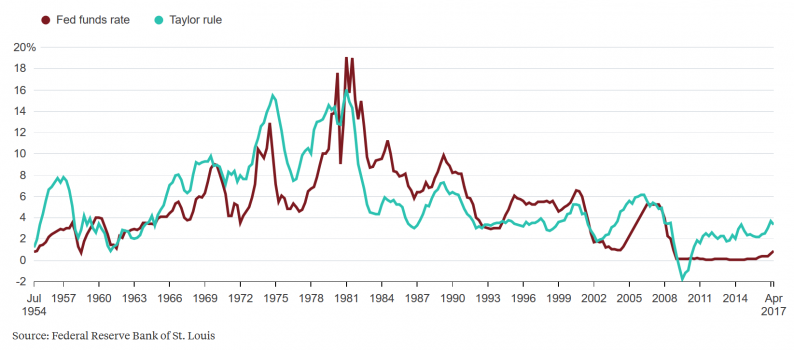President Trump is said to be considering tapping Stanford economist John Taylor as the next Fed Chairman. If Taylor gets the nod, it is possible that the Fed adopts the Taylor rule to set the Fed funds rates. The so-called Taylor rule is a formula that he proposed in 1993 for setting the federal funds rate — the overnight bank lending rate used by the Fed to fight inflation or stimulate the economy. It challenges the Fed’s traditional reliance on the Federal Open Market Committee’s ad hoc judgment.
The Taylor rule calls for a higher fed funds rate when inflation is expected to be higher than usual or when output is above its full employment level; and a lower one when GDP is expected to be lower than usual, all else being equal.
Better or worse?
This is a chart of the difference between the actual Fed funds rate vs the Taylor rule.

The two lines actually follow quite closely but there are a few differences. According to a recent Bloomberg article, “According to the Fed’s calculations, for example, Taylor’s formula would have raised rates sooner to fight inflation in the 1970s and lowered them sooner when inflation receded in the 1980s. It would have kept rates lower during the dot-com bubble but raised them more aggressively during the housing bubble. More recently, the Taylor rule would have begun raising rates in 2010, and the fed funds rate would be roughly 2 percentage points higher than it is today.”
The key here is: what would happen if the Taylor rule were implemented today? How would they account for the big gap between the Taylor rule and the current Fed funds rate? The Taylor rule would set current rates close to 4% which would surely shock markets in the short term. This would be extremely negative for the financial markets and would spike volatility. In reality, the Fed would likely have to set expectations to move rates up over several months or a full year rather than risk shocking the markets.














Leave A Comment